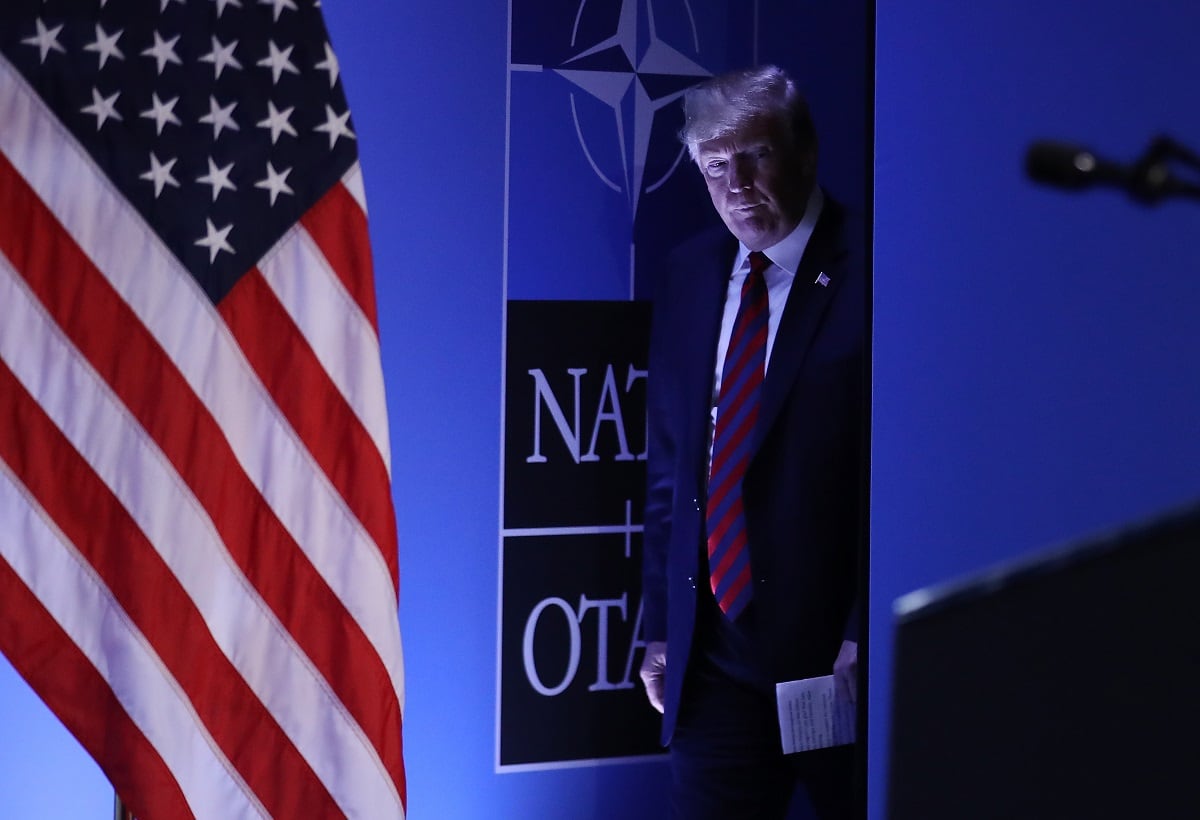PARIS — French President Emmanuel Macron has formally signed into law a new multiyear defense budget, clearing the way for a funding boost for procurement for the Air Force, Army and Navy.
Macron signed the 2019-2025 military budget law on July 13 at Brienne House, just before the garden party held on the eve of the Bastille Day military parade on the Champs Elysées.
This was a “military budget law of growth,” he said in a speech to the officers and personnel who would take part in the parade the next day. The spending would be at a level unseen for decades, hitting the defense spending target of 2 percent of gross domestic product by 2025, he added, and the move comes at a time when the domestic budget was under strain.
RELATED

The budget would allow the acquisition of more than 1,700 armored vehicles for the Army as well as five frigates, four nuclear-powered attack submarines and nine offshore patrol vessels for the Navy, he said. The Air Force would receive 12 in-flight refueling tankers, 28 Rafale fighter jets and 55 upgraded Mirage 2000 fighters, he added.
This year will see a €1.8 billion increase (U.S. $2.1 billion) in the annual defense budget to €34.2 billion, of which €650 million is earmarked for overseas deployment of combat troops, he said.
The French Senate and lower house National Assembly had previously examined the draft law, and both had voted in favor of the bill. One of the amendments added to the bill was an annual parliamentary review of spending, intended as a rebuff to the Economy and Finance Ministry, which looks to hold onto the funds.
The budget sets a target of €295 billion over seven years, with one-third of the funds released after 2023, after a general election held in 2022 and a new government enters power. That delay in spending has sparked some political concern.
Besides equipment, the budget law increased spending for the intelligence services, and Macron called for a military space strategy to be drawn up next year, with France working nationally and with European allies.
The budget would allow modernization of equipment for the three services, plug capability gaps and speed up delivery of the gear, he added. Much equipment was worn out, having been heavily used in the field, while funding shortage had delayed programs, he noted.
“It is a question of credibility,” he said.
The modernization strategy should not be just about numbers, as performance should be pursued and the equipment should meet the requirement, he said, calling for “balanced” cooperation between the services and the Direction Générale de l’Armement procurement office.
Company CEOs and the chiefs of staff of the services were also at the garden party, where Macron called for a “partnership with industry,” as industrial and technological capacity should be maintained and developed to support sovereignty. The head of state thanked defense companies for the speed of their work, which allowed France to sign two firm agreements with Germany to work on a new fighter jet and future tank.
The U.S is a “strategic partner” for France, where there is a “reciprocal and exceptional confidence in the military domain,” he said.
There was “another privileged relationship” with the U.K, he said.
“Brexit or not, this relationship is strategic, deep and will continue to deepen,” he added, referring to Britain’s impending exit from the European Union.
France presently commits 1.78 percent of GDP to the military, with spending due to rise to 1.91 percent in 2023 and reaching 2 percent by 2025. The planned annual increase will be €1.7 billion from 2019 to 2022, with an annual €3 billion increase in the succeeding years.
The military budget law went in the right direction, but there were “fragilities,” Christian Cambon, chairman of the Senate Committee for Foreign Affairs, Defense and Armed Forces, said May 29. A large part of the funds would only be released in 2024 and 2025, after a budgetary review in 2021.






